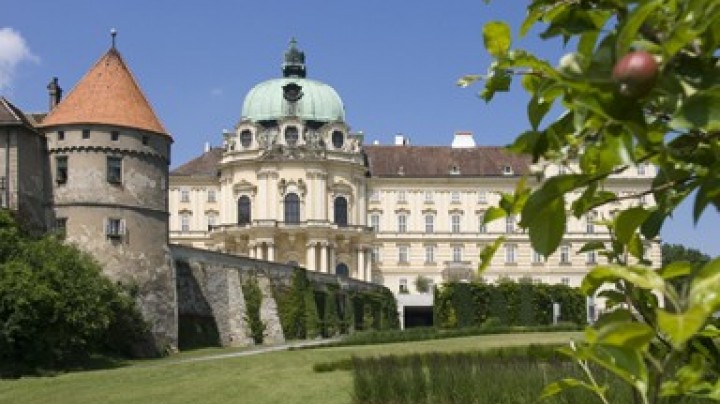
Klosterneuburg Monastery
The monastery of St Leopold
Embedded in the Danube landscape directly before the gates of Vienna is the Canonical Augustinian Monastery of Klosterneuburg. Legend has it that the monastery was erected on the spot where the Babenberg Margrave Leopold III found the wedding veil of his wife Agnes on an elderberry bush after it had been lost for 9 years. But the Romans had already picked out the location for settlement well before. The ruins of their fortress at first provided the stones in 1113 for the Margrave’s residence; a year later for the monastery. In 1133, Leopold III called the Augustinian canons to Klosterneuburg. They still live and work in this house according to the rules of St Augustine. Since Leopold’s canonisation in 1485, the monastery has become a national shrine and later housed the state crown, the Austrian archducal hat.
As of 1730 the most gigantic of all Baroque monasteries was to develop in Klosterneuburg. It was the will of Emperor Charles VI that the monastery and the imperial palace should form a unity. The model for this was the Escorial near Madrid. But after 10 years this ambitious project had to be abandoned subsequent to the death of Charles VI; only a little more than an eighth of the project was realised. The resplendently furnished and adorned Kaiserzimmer – the Imperial Room – was used only once at its inauguration in 1739. It was not until between 1834 and 1842 that the building received its present form. However, thanks to the unfinsished Baroque building programme the major part of the medieval monastery complex has been preserved.

All the year round 9 am – 6 pm (from 16 November 10 am – 5 pm) 24 and 31 December until 12 pm, 25 and 26 December closed. 1 January as of 1 pm










